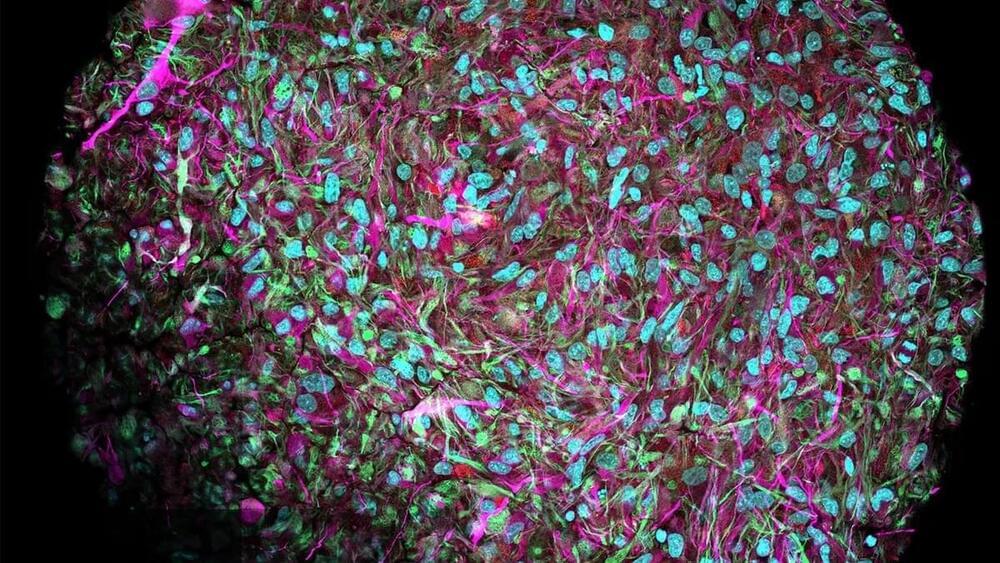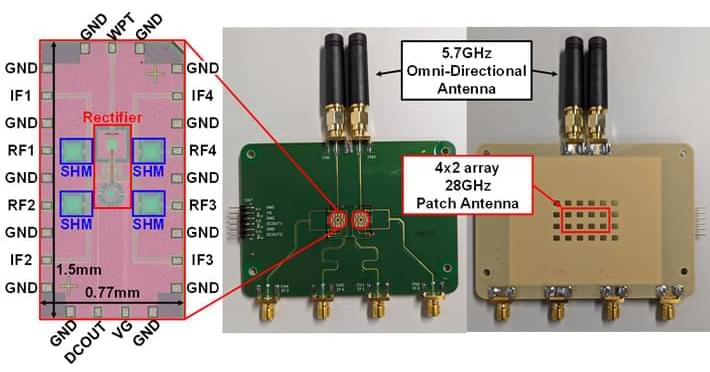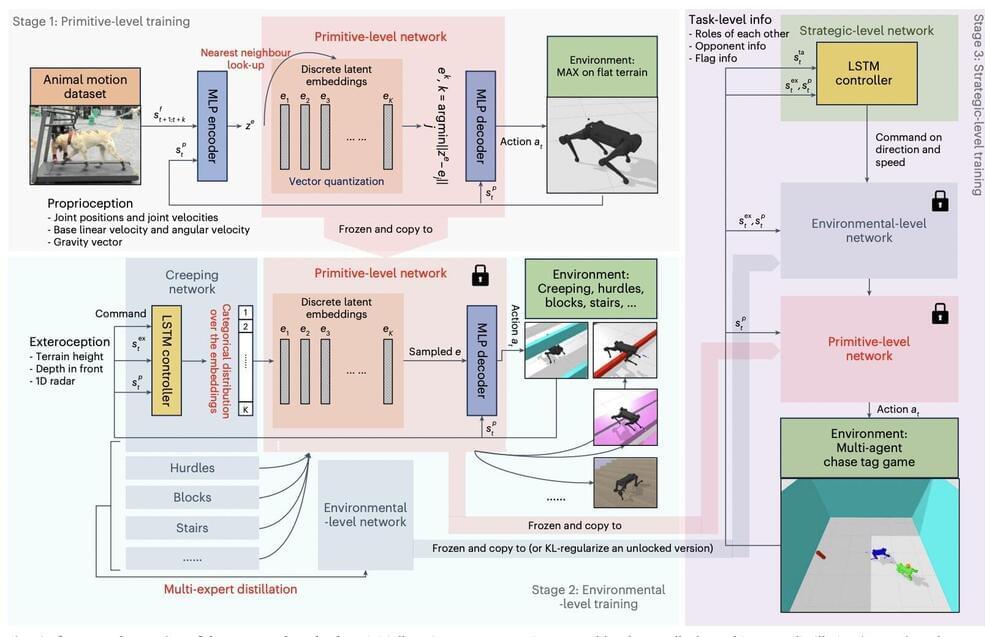Artificial intelligence holds huge promise in health care. But it also faces massive barriers.



Gerard Johnstone and Akela Cooper’s 2022 sci-fi horror M3GAN (streaming now on Peacock) follows the tragic childhood of Cady, a young girl whose parents are killed in a car accident. In the aftermath, Cady goes to live with her Aunt Gemma, a roboticist who has invented the Model 3 Generative Android, M3GAN for short.
M3GAN is a child-sized anthropomorphic robot with human level intelligence, designed to be the perfect friend. M3GAN’s primary directive is to keep Cady safe and happy, and it’s a job she executes with deadly seriousness. In the real world, scientists in China recently crafted a less deadly but equally spine-tingling intelligent robot controlled not by a person or by programming, but by a spheroid blob of human brain tissue.

Author: Kiyana Rahimian.
“Pick all the cells with traffic lights”… Often, when opening a website, users have to verify that they’re not automated software by completing a test where they select certain parts of a picture. Such tests are types of Automated Turing tests. The Turing test, developed by Alan Turing, helps determine if technology can replicate human intelligence. As of now, even though engineering has sought to replicate brain-like functions through developing artificial intelligence (AI), there’s been no success in replicating human brain functions. Although the human brain processes basic information, like numbers, at slower rates than machines, they are better able to process complex information. Intuitive reasoning gives human brains the means to perform considerably better with little, diverse, and/or incomplete information.8 Compared to silicon-based computers, human brains are better at data storage and are way more energy efficient.
Everything you need to know about the that will soon enter the workforce — or are in it already.
Is a cross-disciplinary multimedia performance piece featuring self-developed found material robots, real-time AI generation, motion tracking, audio spatialization, and bio-feedback-based audio synthesis. The immersive piece challenges the human-centric perspective and invites audiences to contemplate the coexistence of technology, nature, and us.
Credits (in alphabetical order):
Co-Directors: Mingyong Cheng, Sophia Sun, Han Zhang.
Performers: Yuemeng Gu, Erika Roos.
Robotic Engineer: Sophia Sun.
Visual Artist: Mingyong Cheng.
Sound Designer: Han Zhang.
Lighting Engineer: Zehao Wang, Han Zhang.
Video Editor: Yuemeng Gu.
Post Production Coordinator: Mingyong Cheng.
Technical \& Installation Support: Yifan Guo, Ke Li, Zehao Wang, Zetao Yu.
Special thanks to Palka Puri for plant support, the Initiative for Digital Exploration of Arts and Sciences (IDEAS) program at the University of California San Diego and Qualcomm Institute for sponsoring this project, and the AV team from the California Institute for Telecommunications and Information Technology (Calit2) for installation and media support.

The proposed innovative design leads to unprecedented power conversion efficiency and improved versatility. A recently developed wirelessly powered 5G relay could accelerate the development of smart factories, report scientists from Tokyo Tech. By adopting a lower operating frequency for wireless power transfer, the proposed relay design solves many of the current limitations, including range and efficiency. In turn, this allows for a more versatile and widespread arrangement of sensors and transceivers in industrial settings.
One of the hallmarks of the Information Age is the transformation of industries towards a greater flow of information. This can be readily seen in high-tech factories and warehouses, where wireless sensors and transceivers are installed in robots, production machinery, and automatic vehicles. In many cases, 5G networks are used to orchestrate operations and communications between these devices.
To avoid relying on cumbersome wired power sources, sensors and transceivers can be energized remotely via wireless power transfer (WPT). However, one problem with conventional WPT designs is that they operate at 24 GHz. At such high frequencies, transmission beams must be extremely narrow to avoid energy losses. Moreover, power can only be transmitted if there is a clear line of sight between the WPT system and the target device. Since 5G relays are often used to extend the range of 5G base stations, WPT needs to reach even further, which is yet another challenge for 24 GHz systems.

Four-legged animals are innately capable of agile and adaptable movements, which allow them to move on a wide range of terrains. Over the past decades, roboticists worldwide have been trying to effectively reproduce these movements in quadrupedal (i.e., four-legged) robots.
Computational models trained via reinforcement learning have been found to achieve particularly promising results for enabling agile locomotion in quadruped robots. However, these models are typically trained in simulated environments and their performance sometimes declines when they are applied to real robots in real-world environments.
Alternative approaches to realizing agile quadruped locomotion utilize footage of moving animals collected by motion sensors and cameras as demonstrations, which are used to train controllers (i.e., algorithms for executing the movements of robots). This approach, dubbed “imitation learning,” was found to enable the reproduction of animal-like movements in some quadrupedal robots.

There are several ways the industry is addressing this energy crisis. First, computing hardware has gotten substantially more energy efficient over the years in terms of the operations executed per watt consumed. Data centers’ power use efficiency, a metric that shows the ratio of power consumed for computing versus for cooling and other infrastructure, has been reduced to 1.5 on average, and even to an impressive 1.2 in advanced facilities. New data centers have more efficient cooling by using water cooling and external cool air when it’s available.
Unfortunately, efficiency alone is not going to solve the sustainability problem. In fact, Jevons paradox points to how efficiency may result in an increase of energy consumption in the longer run. In addition, hardware efficiency gains have slowed down substantially, as the industry has hit the limits of chip technology scaling.

Small-angle scattering (SAS) is a powerful technique for studying nanoscale samples. So far, however, its use in research has been held back by its inability to operate without some prior knowledge of a sample’s chemical composition. Through new research published in The European Physical Journal E, Eugen Anitas at the Bogoliubov Laboratory of Theoretical Physics in Dubna, Russia, presents a more advanced approach, which integrates SAS with machine learning algorithms.
